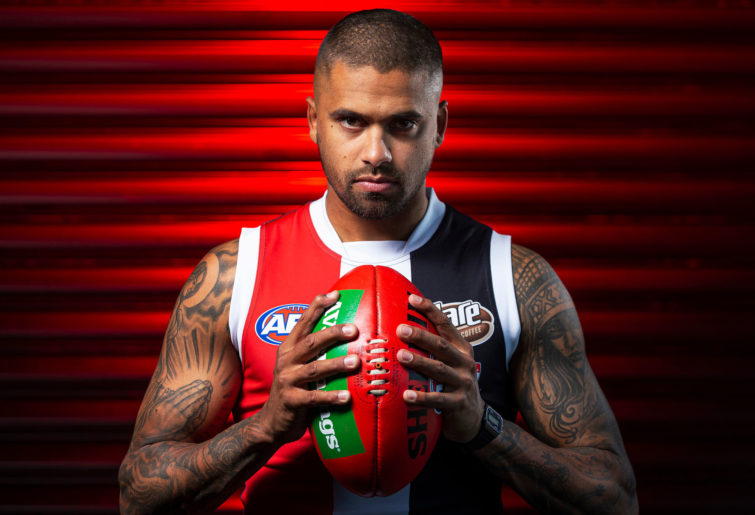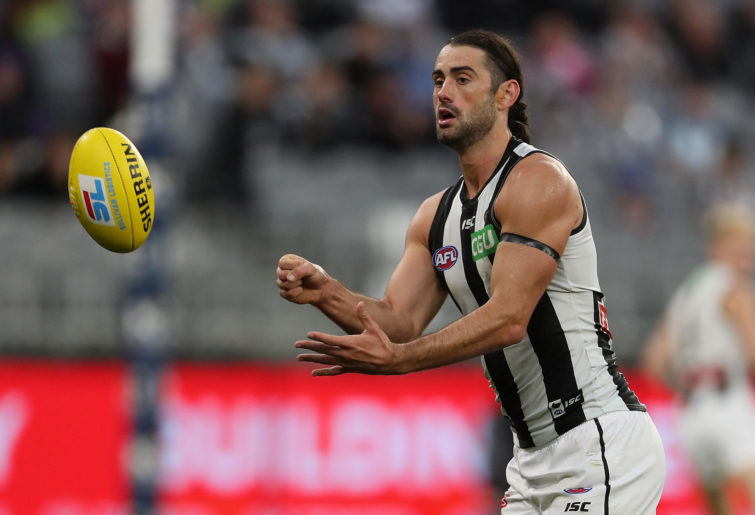The freedom to contract principle is one of the cornerstones of basic contract law. Essentially, it provides that so long as both parties are willing, as well as being of sound mind, they should be free to enter contracts that they agree to.
This principle, while ensuring that every man, woman or in some cases, child, can pursue their interests with the security of an iron clad contract, does have the parallel effect of tying the parties at hand to terms that are potentially detrimental to themselves.
Naturally, football is no safe haven from the live by the sword, die by the sword nature of this principle.
While much still remains unknown – for whatever reason – as to the nitty gritty numbers related to AFL player contracts, Footywire’s database of known contract lengths ensures there is ample basis for analysis here.
AFL club administrators are currently feeling the effects of a surge in player empowerment, the impact of which can be observed through the increased length of player contracts.
We are increasingly seeing year figures appear in contracts that appear to be completely out of sync with the typical length of a player’s prime, which is, shall we say, 5-8 years – unless you’re David Mundy I suppose.
Players are seeking financial security, as they should, however, more money on the line means the stakes of player performance – the player’s offering in exchange for wages – are higher.
Furthermore, the league’s fan-base has grown to accept – if not encourage – player movement, intensifying the need for clubs to tie down their most demanded players to contracts that they and their management deem as desirable.
As a result, growing pains are set to occur as those tasked with arranging these contracts come to terms with the changing face of player wants and needs.
Such growing pains may arise in many forms: unforeseen injury issues, misjudgements in the height of a player’s value, or the dreaded go-home factor.
Running an AFL club is a business, one that requires an incredible degree of forethought in order to be successful, and, put simply, no one is perfect.
So without further ado, the contracts listed below are those which I believe, have the potential for financial disaster for your club.
Rory Atkins – Contracted until 2025
A truly ridiculous one to kick things off, then.
In true Gold Coast fashion, seeking to not only quell their hungry fan-base (I guess) but to demonstrate to the AFL that they possess ambition, signed fringe Adelaide midfielder Rory Atkins following the 2020 season on a five-year deal worth approximately $400,000 per year.
Typically, Atkins registered eight games in his debut season on the Goldy, averaging 11 disposals a game.
The Suns now lie in the unenviable position of paying Atkins $1.6 million dollars to play in the magoos.
As a believer in the AFL’s model of equalisation, I feel as though with enough years and perhaps a few more concessions, the Gold Coast will one day feature in September, however with contracts such as this one on their books…you do wonder, don’t you.
Aidan Corr – Contracted until 2025
From one club stuck in the mud to another.
While all signs appear to be pointing toward clearer skies at North, a few shadowy clouds remain present.
For instance, the decision to sign so-so GWS defender Aidan Corr to a five-year deal worth approximately $550,000 per season – a fifth of which has already been burned on a two-game debut year.
Perhaps with the departure of the ever-reliable Robbie Tarrant, this contract’s clearly illogical structure will fade in time, but also, and entirely more probably, it will not.

Aidan Corr (Photo by Chris Hyde/Getty Images)
Jack Darling – Contracted until 2025
This one is a bit of a lightning rod, one that I really don’t want to touch as well.
However, the situation being as it is – an element of which is Darling’s mum being a patron saint of Perth’s anti-vax scene – it undoubtedly belongs here.
Darling’s contract is perhaps the most justifiable in terms of length and pay packet listed here, that said, as long as he appears to be trending toward becoming another Liam Jones level disaster of wasted years, his contract will hang over West Coast HQ like a foul odour.
Here’s hoping he comes to his senses.
Brad Hill – Contracted until 2025
Sh***ing on Brad Hill has become the AFL’s dead horse to whip in recent years, so I thought I’d get my kicks in before it becomes completely insufferable.
I say that in gest… kind of.
As when compiling this list, the reality that St Kilda stand to pay a player who appears to be completely bereft of confidence and direction, around about $2.7 million in the coming three years, is one that I cannot simply ignore.
Given that prior to putting pen to paper at Moorabbin, Hill was an All Australian level wingman (if that position were ever recognised in AA teams, but that’s a matter for another article), the current situation is a particularly painful one.
There is hope for Hill to turn it around, but Father Time waits for no man, it is now sink or swim for this Saint.

Bradley Hill. (Photo by Daniel Pockett/Getty Images)
Stephen Coniglio – Contracted until 2026
Coniglio is an odd one.
If innuendo around the AFL media is to be believed, he made it apparent that he wanted to be the club’s sole captain.
As such he was rewarded with a contract befitting a poster boy.
But as the AFL’s all-inclusive Amazon documentary series revealed, the figurative weight on Coniglio’s shoulders – in tandem with his very literal injury issues – have taken a toll on his output.
A seven-year deal at the end of 2019 worth approximately a million per season now has that foul stench of mistake surrounding it as Coniglio divided his time in 2021 in the rehab room, scrapping for form in the 2’s or looking like a shadow of himself at the top level.
Coniglio is a likeable guy and is undeniable when at full flight, so I hope the state of his career improves in time, but once more, the signs are bleak.
Zac Williams – Contracted until 2026
For the life of me, I will never be able to wrap my head around the decision making process that resulted in Carlton’s recruitment of Zac Williams as a presupposed missing link for their midfield.
With Adam Cerra signed to what you can only suspect is a healthy pay packet, still needing to get Sam Walsh to sign on the dotted line as well as having a few other eye-watering contracts (one of which will be touched on shortly) on their books – Williams’ six-year deal worth approximately $800,000 per season must be causing more than a few headaches at Ikon Park.
With it soberingly apparent inside half a season that Williams is more of a hindrance to rather than any sort of saviour for Carlton’s engine room, the Blues must now commit another $4m to the Zac Williams project, having now been (de)reinvented as a half back flanker (who would have thought?)
The main point of confusion with the Zac Williams deal is how prominent he factors into Carlton’s next premiership tilt, is he in that handful of players that distinguishes an upwardly mobile team in and around finals football from a team that is actively contending for a flag?
I’m not sure. Is that enough to prove my point?
Brodie Grundy – Contracted until 2027
Prior to the 2021 season, I’d have engaged in an hours long debate over whether Max Gawn or Brodie Grundy are the most effectual ruckman in the AFL – however, I have now seen the former do too many things on the grandest stage to deny him his crown.
In tandem with Max’s ascension to premiership captain was Grundy’s – despite his best efforts – affiliation with Collingwood’s year from hell.
This entry is less to do with Grundy as a player or elements of his performance, but more so how his contract is completely misaligned with Collingwood and its path over the next 3-4 seasons.
Grundy will enter the 2022 season at almost 28 years of age, one must wonder, with Collingwood on course toward a fully fledged rebuild, is his million-a-year deal going to be worth its while in seasons four through seven.
Could the needs of the list have evolved beyond needing to tie down their ruck, will Grundy be as effectual when the ravages of time begin to seep into his elongated limbs?
Once more, Grundy’s value is self-evident, and the utter circus that has been the Collingwood football club in recent years has occurred independent of himself, however the question still remains…
Will Grundy’s prime years – as well as a fairly large stack of cash – be wasted on a carefully charted rebuild.

(Photo by Paul Kane/Getty Images)
Josh Kelly – Contracted until 2029
Lastly, we have the Giants’ take on the Lance Franklin deal.
Not all things are the same, but the premise is there, locking down a star of the competition to an unprecedentedly long deal in order to ward off competition from rival clubs.
This comparison is where I have issues.
It’s not particularly scientific, no concrete data in support of it, but I query you the reader – is Josh Kelly the man to which this contract is suited.
When you cast your mind over the marquee names of the competition – the ones that get the turnstiles ticking and seats filled – those who would befit an eight-year contract warranting $1m a season.
How many names do you rattle off before you utter Josh Kelly’s name?
There’s a number of ways you could look at it – 22 players contribute to a single AFL game and having Kelly ever present on the team sheet could certainly be seen as a relief.
The thing that will keep GWS administrators up at night is the opportunity cost of such a deal.
North Melbourne – desperate for the proverbial “big fish” to bite their trade line for so many years now – god only knows the package they’d have put together to lure Kelly to the club when the timing for GWS to capitalise was right.
Kelly may reveal himself to be circuit breaker in delivering a flag to Western Sydney, but much Coniglio, doubt remains whether GWS were haphazardly trying to prolong their premiership window, rather than taking a step back and re-investing in another.
There you have it.
Can’t imagine I’d have upset anyone, hope you enjoyed it.































































































